How to Check the Mastercard MATCH List
December 15, 2024
FAQ: How The Mastercard MATCH List Works
February 13, 2025Three Ways to Get Off the MATCH List
The MATCH List is one exclusive list that you do not want to ever find yourself on, especially as a small business owner. It is difficult to navigate, unrelenting, unforgiving, and notoriously designed to blacklist businesses for up to five years. If you have found yourself on the MATCH List or suspect you might be on it, you have options for removal. Keep reading to learn more about the MATCH List, why you might be on it, tips for getting off, and three different ways that you can try to get off the MATCH List.
What is the MATCH List?
The Mastercard Alert To Control High-risk Merchants (MATCH Pro) system allows an Authorized User to assess potential risks associated with a Merchant prior to enabling Mastercard acceptance, with the opportunity to develop and review enhanced or incremental risk information before entering into a Merchant agreement.
MATCH Pro is a mandatory system for Mastercard Acquirers. The MATCH Pro database includes customer-reported information about Merchants (and their owners) that an Authorized user has terminated. When an Acquirer considers onboarding a Merchant, MATCH Pro can assist Acquirers with risk determinations during onboarding. By making independent risk determinations, Acquirers can add Merchants who have been added to MATCH PRO.
Here’s how banks can do it:
- Step 1: Within 5 days of the decision to terminate a merchant that meets one of the MATCH Pro reasons codes, the Acquirer submits an additional record to the MATCH Pro API that includes information on the merchant and the associated principal owner(s), and the applicable reason code.
- Step 2: The record is added to MATCH Pro and made available to all other acquirers in real time.
- Step 3: MATCH Pro returns a confirmation to the acquirer that the merchant was successfully added and provides a MATCH Pro Reference Number.
Why Am I On The MATCH List?
There are twelve different reasons you could be on the MATCH List. The most common reasons include excessive chargebacks and violation of standards. The full list includes:
- Account Data Compromise
- Common Point of Purchase (CPP)
- Laundering
- Excessive Chargebacks
- Excessive Fraud
- Mastercard Questionable Merchant Audit Program
- Bankruptcy/Liquidation/Insolvency
- Violation of Standards
- Merchant Collusion
- PCI Data Security Standard Noncompliance
- Illegal Transactions
- Identity Theft
Tips for Getting Off MATCH
Once you have been placed on the MATCH List, you won’t age off of it for five years. This means that you won’t be able to use your merchant account during this time. You will not be able to accept credit cards or debit cards, take online payments, set up recurring billing or card charging, or accept any other type of electronic transfer. It essentially turns you into a cash-only business, which is difficult to sustain—especially for five years.
If you want to get off the MATCH List, there are a few tips you can keep in mind before diving in. You want to make sure you have lots of documentation, remember that you do not have the upper hand, and do not try to find any loopholes.
Have Lots of Documentation
If you have been placed on the MATCH List and feel that it is unjust, it is important for you to spend some time collecting as much documentation that supports your case as possible. If you were placed on the MATCH List for a certain violation and have since corrected the issue, make sure you are ready with the right documentation to show that you are now compliant. The more robust your paper trail, the better your chances are for early removal.
They Don’t Have to Tell You Anything
One of the most important tips to remember during the MATCH List removal process, especially when navigating it on your own without legal help, is that your bank and payment processor do not have to tell you anything. In fact, they don’t even need to confirm to you whether or not you are even on the MATCH List.
This is why the MATCH List can be so unrelenting; there is no easy MATCH List search tool to see that you are on it, your bank doesn’t have to tell you you’re on it, and your merchant account may be randomly terminated with no explanation.
Not only does your bank not have to tell you you’re on the MATCH List, but they do not need to tell you why or spend time entertaining your rebuttal case. If you find yourself hitting wall after wall, just remember that the system was designed this way against you.
Don’t Try to Find Loopholes
If your merchant account has been terminated and you are on the MATCH List, the system was designed to ensure you cannot open a new one through any loopholes. This includes creating a new business under a new name. Attempting to find a loophole could cause you more trouble than it is worth. The MATCH List is thorough and robust, and it includes all of the following information:
- Business Legal Name and DBA
- Business Address
- Business Phone Number
- Business Tax ID
- Business URL
- Principal Owner Name
- Principal Owner Address
- Principal Owner Phone Number
- Principal Owner Tax ID
- Account Opening Date and Termination Date
- MATCH Reason Code
MATCH List Removal Method 1: Talk To Your Bank
One of the ways you can get off the MATCH List is by calling your bank and speaking to them about it. Again, they do not have to provide you with any information at all. If you do happen to get lucky, you can ask them why you are on it, prove that you are innocent or the situation has been rectified, and request that the decision be reversed.
Merchant law can be difficult waters to navigate alone, especially if you do not know why you are on the MATCH List. Remember to have plenty of documentation, as mentioned above, especially if you feel that your situation can be easily fixed.
MATCH List Removal Method 2: Wait it Out
One of the ways you can get off the MATCH List is the old-fashioned way, which is waiting out the five-year penalty. While this is not the ideal scenario, you can still try to reopen a merchant account with a high-risk processor.
There is no guarantee a high-risk processor will work with a business that is on the MATCH List, as they tend to work with inherently high-risk businesses such as smoke shops, online gambling, subscription services, adult websites, and the like.
High-risk processors also come along with hefty fines, high fees, and lengthy contracts.
MATCH List Removal Method 3: Get Legal Help
The best way you can get off the MATCH List to ensure you get back to business as quickly as possible with the least amount of headache possible is to hire legal help. At TFM Law, we will work to get you off the MATCH List, no matter the reason you are on it.
Early MATCH Removal with TFM Law
If you have found yourself on the Match List, you have options. Don’t wait the five-year period, get back to business ASAP.
The Law Offices of Theodore Monroe focuses on litigation and counseling in the areas of payments, credit card processing, e-commerce, direct response marketing, and Federal Trade Commission enforcement.
Last year, the firm removed 100% of the people who came to us from the MATCH list.
Theodore F. Monroe, Founder of TFM Law, has successfully:
- Represented merchants recovering funds from processors
- Structured processing relationships to comply with Card Brand requirements
- Drafted and negotiated contracts involving payment facilitators and ISOs
- Represented continuity merchants in compliance and litigation issues
- Fought for numerous companies in suits brought by the Federal Trade Commission and obtained excellent results for firms in the digital products, loan modification, government grant, and nutraceuticals industries
Before opening his firm, Mr. Monroe practiced law with Crosby, Heafey, Roach & May (now Reed Smith LLP) and Lewis, D’Amato, Brisbois & Bisgaard (now Lewis, Brisbois, Bisgaard & Smith), where he defended numerous accounting and law firms in professional liability actions, and insurance carriers in bad faith actions.
Before becoming a lawyer, Mr. Monroe worked as a forensic accountant at Coopers & Lybrand, which provided him with a unique background in forensic accounting and financial analysis among litigators in Los Angeles. Mr. Monroe studied at Duke University Law School, achieved a BS with Honors in Accounting from the University of Kentucky, and is a member of the California State Bar and the Kentucky State Bar.
For more information and to get off MATCH, visit us at howtogetoffmatch.com!




